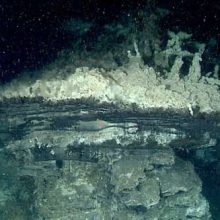Source: Phys.Org
Author: Priyanka Runwal
Almost 4,000 meters below the sea surface, in the southern Pescadero Basin, jagged ivory towers rise from the seafloor and emit hot shimmering fluid. They are the deepest known hydrothermal vents in the Gulf of California.
These deep-sea chimneys were discovered by MBARI scientists in 2015. The researchers call them the Auka vents. What’s intriguing is that these vents spew chemicals and host animals that are very different from those seen at Alarcón Rise, which is just 100 miles away.
On October 31, 2018, an interdisciplinary team of researchers embarked on a 21-day expedition on board the research vessel Falkor, operated by the Schmidt Ocean Institute. They will zoom in further on the Auka vents’ geology, chemistry, and biology, while continuing to look for more hydrothermal vents in the basin.
For David Caress, an MBARI geophysicist, returning to the Pescadero Basin will be especially exciting. “It will be fun to explore a place that I was involved in discovering,” he said. On this expedition, he will lead the seabed mapping team.
The Falkor carries a multibeam sonar that can make 50-meter resolution maps of the seafloor near the Auka vents. But this resolution isn’t good enough to reveal smaller features like hydrothermal chimneys.
Read more at: https://phys.org/news/2018-11-scout-hydrothermal-vents-gulf-california.html#jCp
Continue reading here.

